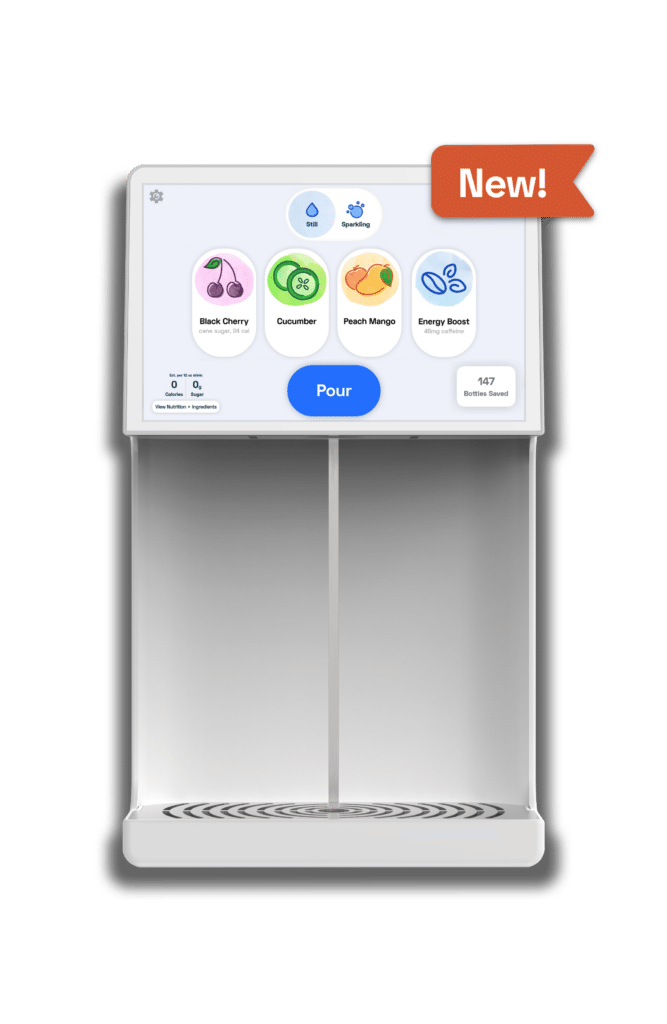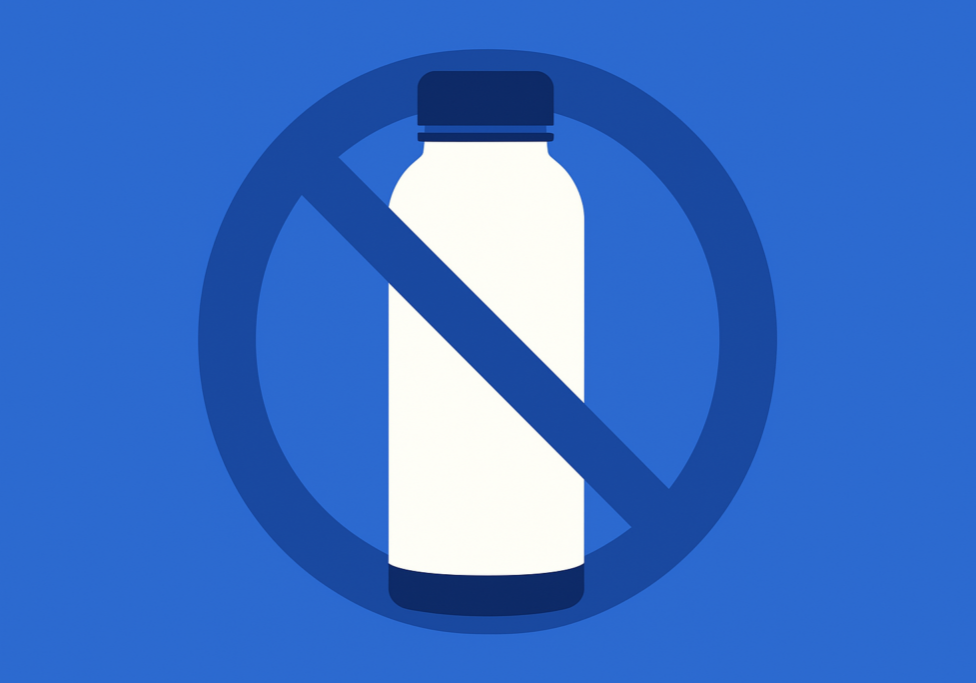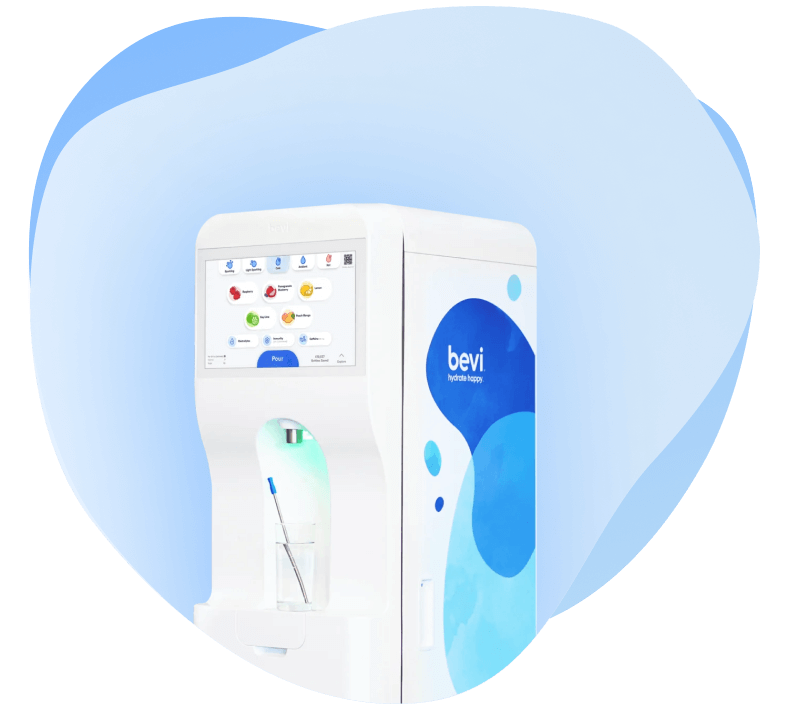July 19, 2024. We all know plastics are bad—bad for human health and the health of the planet. Despite this, we continue to use single-serving plastic bottles rather than prioritize reusable water bottles. Bottled water has been the top-selling beverage in the United States since overtaking soda in 2016. An estimated 1.3 billion bottles of water are sold each day.
When you consider that single-use bottles are largely unnecessary in the first place, the scale of this pollution becomes even more disturbing. In a country where tap water is almost universally available, this entire category of waste could be significantly reduced with the widespread use of reusable bottles and proper, point-of-use filtration systems.
Yet, reusable bottles often get a side-eye in our daily lives. This isn’t just an innocent oversight—often, it’s a tactic to boost sales of the plastic water bottles that we all know are detrimental. Still, there are places where doing the eco-friendly thing and carrying a reusable bottle is met with suspicion. Meanwhile, companies frequently tout their sustainability credentials but drag their feet on simple changes, like investing in filtered-water refill stations.
At Bevi, we believe things shouldn’t be this way. In this post, we’re spotlighting five “No Bottle Zones” that could easily take steps to reduce plastic waste. We’re also celebrating some hydration heroes—companies and places that are leading the charge toward an unbottled future.
1. Sports games & athletic venues: Where reusable water bottles shouldn’t just be for the players

We’ve all been there: you splurge on expensive game tickets, pumped to enjoy the thrill of live sports, only to be forced by the heat and large crowds to purchase an insanely overpriced water bottle upon entry. It’s a gut punch to your wallet. You should be able to save your money for the fun stuff—popcorn, hot dogs, and maybe a beer or two. But no, those bottles of water are worth their weight in championship rings,
According to the Sierra Club, the NFL, MLB, NBA, and NHL combined generate a staggering 35,000 metric tons of CO2 each year just from their fans’ waste. That’s equivalent to the emissions of about 7,600 cars or 4,200 homes—and this doesn’t even include college and high school sports. Clearly, the environmental impact of single-use plastics in stadiums is colossal.
But there’s some good news on the horizon. In December 2023, the New York City Council approved a bill allowing sports fans to bring reusable bottles to professional and collegiate sports venues. Set to go into effect later this year, this regulation also imposes penalties on venues that do not comply.
In a similar vein, the US Open made significant strides last year by permitting visitors to bring reusable bottles and installing refill stations. These changes not only help fans save money but also significantly reduce plastic waste. We hope to see similar initiatives adopted throughout the world of sports in the coming years.
On Earth Day, the NBA posted a shout-out to stadiums like the Portland Trail Blazers’ arena, which allows reusable bottles. This is a step in the right direction, but the league should go further in encouraging other stadiums to take similar actions. Imagine the impact if all sports venues embraced the reusable bottle revolution—sure to be an environmental game-changer.
2. Concert venues & music festivals: Where reusable water bottles can help prevent attendee dehydration

Ah, yes: nothing says “rock and roll” quite like having to chuck your beloved Owala water bottle into the bin before entering a concert or music festival. Many music venues prohibit outside containers under the guise of safety concerns, leading to a sad symphony of plastic cup waste when the show is over. While the policy might be in place to prevent smuggling illicit substances or to encourage you to spend an arm and a leg on their branded beverages, it’s a nightmare for the environment.
Plus, it poses a public safety issue. Concerts aren’t just physically exhausting for the musicians, but also for the concert goers who are dancing for hours on end. It’s crucial to stay hydrated, especially if you’re consuming alcohol. In large crowds, the compounded risks of overheating and dehydration can be dangerous.
Where concert venues are failing to take action, musicians and bands are stepping up to put pressure on them to embrace more eco-friendly practices. In 2021, Coldplay announced a Sustainability Initiative accompanying their World Tour. This included installing electricity-generating power bikes and kinetic floors in locations around the stadium so that fans’ dancing could be converted into energy to power the show. Leader singer Chris Martin has even been seen arriving at tour venues using a commuter train.
Bevi machines provide customizable beverages without single-use bottles.
While this is a cool and conceptually advanced solution, it can distract from more straightforward, tried-and-true methods with a broader impact—like simply letting people enter with reusable water bottles for all of the shows one concert venue may host over the course of the year.
But meaningful change might be in the wings. In 2023, Benjamin Kogan, the CEO behind Reusable Solutions, launched Musicians for Sustainability, a pledge encouraging bands and vendors to produce more eco-friendly events. The pledge suggests reducing the amount of single-use plastic at concerts by partnering with companies to set up borrow-and-return stations, where attendees can easily pick up and return reusable cups. Here’s hoping that more venues will listen to the beat of the eco-friendly drum and start to allow reusable bottles.
3. Coffee houses & cafe: Where you shouldn’t just bring a reusable mug, but a reusable bottle, too
At coffee chains across the country, the acceptance of reusable water bottles can be spotty post-pandemic, often depending on the barista’s discretion. This leads to inconsistent practices and further confusion among consumers trying to be environmentally-conscious.
During the coronavirus pandemic, Starbucks temporarily banned the use of reusable cups in their stores, aiming to minimize potential virus transmission. While this was a wise cautionary health measure, it unfortunately set back efforts to encourage responsible bring-your-own-bottle behavior. Plus, it no doubt hindered Starbucks’ ambitious sustainability goals of reducing plastic waste by 50% by 2030.

But there’s some good news brewing. In June 2022, Starbucks announced they would once again welcome the use of personal reusable cups in their stores, implementing standardized safe measures to reduce contact points between baristas and customers.
Even more encouraging, in January 2024, Starbucks announced an expansion of their “Bring your own cup” program, allowing customers to use their personal cups for mobile and drive-through orders. This initiative aims to make sustainable choices more accessible and convenient for customers, no matter how they choose to order their coffee. This move was a significant step forward in promoting sustainable practices in coffee culture.
Starbucks also offers a small incentive for customers who bring their own reusable water bottle or thermos: a $0.10 discount on their beverage. While this discount could arguably be more substantial, it’s a positive start. For instance, the Starbucks at Arizona State University is setting a better example by offering a $1 discount for customers who bring their own cup, highlighting a model that other locations could follow.
4. Museums & art galleries: Look for the piece that really speaks to you, not for where the water fountain is
High culture and high environmental standards don’t always mix, apparently. Many museums and galleries have strict no-food-or-drink policies to protect their exhibits. Unfortunately, this sometimes extends to reusable water bottles, leaving visitors parched.

For travelers exploring museums as part of a longer day on foot with their families, staying properly hydrated without carrying a reusable bottle can be challenging and expensive. It’s tough to enjoy the masterpieces when you’re constantly in search of a water fountain.
However, some cultural institutions are making exceptions. The Uffizi Galleries in Florence and the Metropolitan Museum of Art in New York allow personal water bottles, showing that it’s possible to balance the preservation of art with the hydration needs of visitors.
It seems like there could be more trust in allowing visitors to bring reusable bottles while still protecting the artwork. Museums could install refill stations in various lobbies throughout their floors, enabling visitors to stay hydrated without compromising the integrity of the exhibits. By adopting such measures, museums can uphold high environmental standards and make the visitor experience more enjoyable.
Incorporating hydration solutions not only supports sustainability but also enhances the visitor experience. Imagine being able to explore a museum at your own pace, without the distraction of thirst. More museums and galleries should consider this balanced approach, ensuring that high culture and environmental consciousness can coexist with one another.
5. Airports: It’s easier to get dehydrated on planes, after all
Ah, the modern marvel of air travel. You know the routine: take off your shoes, belts, and throw away your water bottle. While you can get past TSA by ensuring your reusable water bottle is completely empty, it can still feel like your personal bottle is treated with scrutiny. Plus, airports across the country are inconsistent in their offerings for refilling stations: some feature modern, cool, filtered hydration stations, while others have water fountains that look like relics from the 1990s.

When facing a long journey and hoping to minimize fatigue while traveling between time zones, the difficulties of staying hydrated are unfortunate. Time on an airplane is actually one of the most critical times to stay hydrated, as the low humidity levels and low air pressure zap your body of water.
Some airports are taking steps in the right direction. LAX banned the sale of single-use plastic water bottles as of June 023, as part of the city of Los Angeles’ Green New Deal. Travelers are encouraged to bring reusable bottles and fill them at the numerous hydration stations installed throughout the terminals. This initiative not only supports sustainability but also ensures that passengers can stay hydrated throughout their journey.
San Francisco International Airport (SFO) implemented a similar ban on single-use plastic bottles in 2019, promoting the use of reusable bottles while offering ample hydration access. Travelers can still purchase water in aluminum cans, but the measure goes a long way in encouraging the use of personal bottles and helping reduce the waste associated with air travel.
These changes are a step in the right direction, showcasing how airports can support both environmental sustainability and passenger well-being. Here’s hoping more airports will follow suit, making it easier for travelers to stay hydrated at high elevation levels.
Reusable water bottles should replace single-use water bottles everywhere throughout our lives
In these diverse settings, the battle for reusable bottles continues. While the world moves toward sustainability, old habits and regulations die hard. With Bevi, the goal is to create a world where you plan for—and even look forward to—the experience of bringing your reusable bottle around.
Bevi machines, which offer filtered carbonated and non-carbonated water with your choice of flavors and enhancements, can encourage reusable bottles and make hydrating more enjoyable, offering customers unmatched levels of beverage customization on demand.






